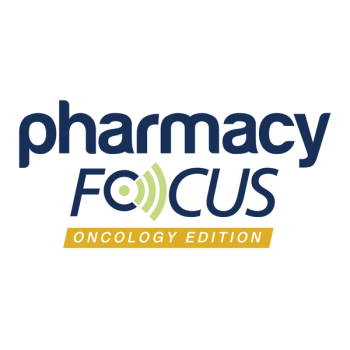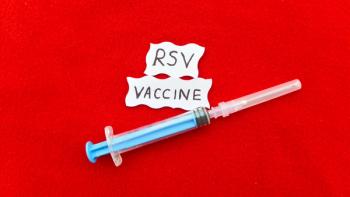
NCCN Adds Naxitamab as Category 2A Recommendation for High-Risk Neuroblastoma
Naxitamab-gqgk has been added as a Category 2A recommendation in the updated National Comprehensive Cancer Network (NCCN) guidelines for high-risk neuroblastoma, reflecting growing consensus on its role in treating relapsed or refractory disease.
The National Comprehensive Cancer Network (NCCN) has updated its version 2.2024 clinical practice guidelines in oncology for neuroblastoma to include naxitamab-gqgk (Danyelza; Y-mAbs Therapeutics), as a Category 2A treatment recommendation for high-risk neuroblastoma.1,2 This development marks a significant step in the formal recognition of anti-GD2 targeted immunotherapy as part of the treatment landscape for relapsed or refractory (R/R) neuroblastoma.1
Understanding Neuroblastoma: A High-Stakes Pediatric Malignancy
Neuroblastoma is the most frequently occurring extracranial solid tumor in children and accounts for approximately 15% of pediatric cancer-related deaths in the US.1,3 It is classified as an embryonal neuroendocrine tumor that arises from neural crest progenitor cells and can occur anywhere along the sympathetic nervous system—including the adrenal glands (most common site), superior cervical, paraspinal, and celiac ganglia. Its median age of diagnosis is 17 months, and it has an annual incidence of around 650 cases in the US.3
The presentation of neuroblastoma is highly variable, ranging from a benign abdominal mass to life-threatening, metastatic disease.1,3 More than half of patients present with metastatic spread at diagnosis, most frequently to the bone and bone marrow, followed by lymph nodes and, less commonly, the lungs. Clinical signs can include abdominal pain, fatigue, fever, bone pain, or neurological symptoms, depending on tumor location. A subset of patients may exhibit opsoclonus-myoclonus-ataxia syndrome or Horner syndrome when the tumor involves the cervical region.3
Molecular Landscape and Risk Stratification
Prognosis and treatment decisions in neuroblastoma hinge on molecular and cytogenetic markers. The MYCN oncogene is a critical prognostic factor, amplified in approximately 25% of cases and associated with rapid tumor progression and poor outcomes. Additional poor prognostic features include chromosome 1p and 11q deletions, 17q gain, and elevated levels of serum markers such as lactate dehydrogenase, ferritin, and neuron-specific enolase.3
These high-risk cases—particularly those with MYCN amplification or refractory disease—have historically shown limited response to conventional therapies. As a result, targeted immunotherapeutics such as anti-GD2 monoclonal antibodies have emerged as critical components in contemporary treatment strategies.1
Naxitamab: FDA Status and Mechanism of Action
Naxitamab is a humanized monoclonal antibody that targets GD2, a disialoganglioside overexpressed on neuroblastoma cells. It received accelerated FDA approval in November 2020 for use in combination with granulocyte-macrophage colony-stimulating factor (GM-CSF) in pediatric patients 1 year and older, as well as adults, with R/R high-risk neuroblastoma in the bone or bone marrow who demonstrate at least stable disease following prior therapy.1,4
The FDA approval was based on efficacy results from 2 single-arm, open-label trials—Study 201 (NCT03363373) and Study 12-230 (NCT01757626).1,5,6 Both studies evaluated naxitamab in combination with GM-CSF and reported encouraging response rates and manageable safety profiles in this difficult-to-treat population.1
NCCN Category 2A Recommendation: What It Means
The NCCN’s Category 2A designation indicates uniform consensus among panelists that naxitamab is an appropriate treatment option, even though the supporting evidence may be derived from lower-level studies (ie, nonrandomized trials). The update reflects increased comfort among oncology experts with the clinical utility of naxitamab and recognizes its role in the multidisciplinary management of high-risk neuroblastoma.1
For pharmacists, the addition of naxitamab to the NCCN guidelines may lead to increased clinical adoption and broader payer coverage—particularly important in a high-cost, high-need therapeutic area such as pediatric oncology.
Administration and Safety Considerations
Naxitamab is administered intravenously in specialized care settings, typically outpatient clinics with capabilities for emergency response. It is associated with a boxed warning for serious infusion-related reactions, including anaphylaxis and cardiac arrest, as well as neurotoxicities such as severe pain and rare occurrences of transverse myelitis.1
Pharmacists are vital to ensuring the safe use of this therapy through patient selection verification, dosing and preparation oversight, supportive medication planning (eg, analgesia and antihistamines), and monitoring for acute adverse events. Additionally, pharmacists help coordinate multidisciplinary care to ensure continuity across oncology, neurology, and palliative care teams.
The Evolving Role of Anti-GD2 Therapy in Neuroblastoma
Anti-GD2 immunotherapy has become a foundational component of neuroblastoma treatment protocols, particularly in patients who are not eligible for curative-intent approaches such as stem cell transplant or surgery. Agents such as naxitamab work by engaging the immune system to attack neuroblastoma cells directly, complementing other treatments such as chemotherapy, radiation, and autologous stem cell rescue.1,3
The inclusion of naxitamab in NCCN guidelines underscores a shift toward integrating biologically targeted therapies into pediatric oncology. As researchers continue to refine biomarker-driven strategies, pharmacists will increasingly be tasked with evaluating complex regimens involving monoclonal antibodies, immunostimulants, and potentially radiolabeled compounds.
Conclusion
The NCCN’s recognition of naxitamab as a Category 2A recommendation represents an important advancement for patients with high-risk neuroblastoma. This update also highlights the critical role of pharmacists in managing targeted therapies that are both clinically nuanced and operationally complex. As the understanding of neuroblastoma’s molecular drivers deepens and as precision therapies continue to expand, the role of oncology pharmacists in optimizing outcomes through interprofessional collaboration will continue to grow.
REFERENCES
1. Y-mAbs Announces Update to National Comprehensive Cancer Network® (NCCN®) Clinical Practice Guidelines in Oncology for Neuroblastoma to Include Naxitamab-gqgk (DANYELZA®). May 7, 2025. Accessed May 14, 2026. https://www.globenewswire.com/news-release/2025/05/07/3075963/0/en/Y-mAbs-Announces-Update-to-National-Comprehensive-Cancer-Network-NCCN-Clinical-Practice-Guidelines-in-Oncology-for-Neuroblastoma-to-Include-Naxitamab-gqgk-DANYELZA.html
2.Bagatell R, Park JR, Acharya S, et al. Neuroblastoma, Version 2.2024, NCCN Clinical Practice Guidelines in Oncology. J Natl Compr Canc Netw. 2024;22(6):413-433. doi:10.6004/jnccn.2024.0040
3. Mahapatra S, Challagundla KB. Neuroblastoma. StatPearls. Updated July 10, 2023. Accessed May 14, 2026. https://www.ncbi.nlm.nih.gov/books/NBK448111/
4. FDA grants accelerated approval to naxitamab for high-risk neuroblastoma in bone or bone marrow. FDA. November 27, 2020. Accessed May 14, 2026. https://www.fda.gov/drugs/resources-information-approved-drugs/fda-grants-accelerated-approval-naxitamab-high-risk-neuroblastoma-bone-or-bone-marrow
5. Naxitamab for High-Risk Neuroblastoma Patients with Primary Refractory Disease or Incomplete Response to Salvage Treatment in Bone And/or Bone Marrow. Clinicaltrials.gov. Updated February 20, 2025. Accessed May 14, 2026. https://clinicaltrials.gov/study/NCT03363373
6. Combination Therapy of Antibody Hu3F8 With Granulocyte-Macrophage Colony Stimulating Factor (GM-CSF) in Patients With Relapsed/Refractory High-Risk Neuroblastoma. Clinicaltrials.gov. Updated January 7, 2025. Accessed May 14, 2026. https://clinicaltrials.gov/study/NCT01757626?term=NCT01757626&rank=1
Newsletter
Stay informed on drug updates, treatment guidelines, and pharmacy practice trends—subscribe to Pharmacy Times for weekly clinical insights.




















































































































































































































